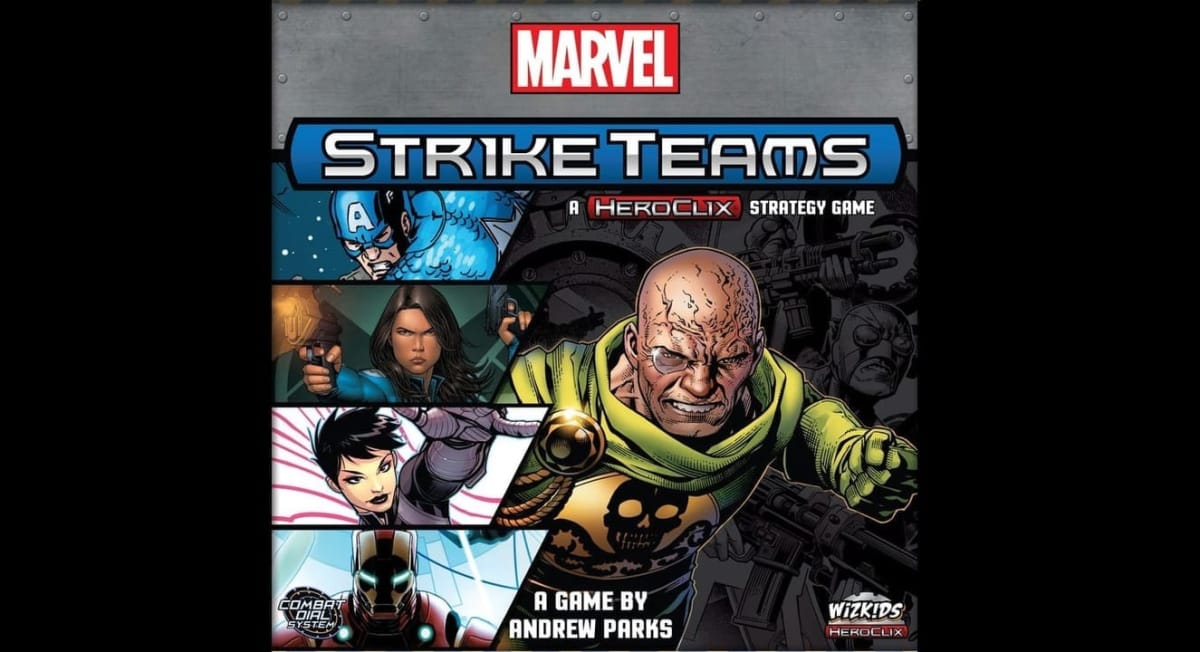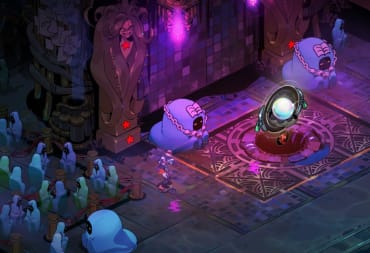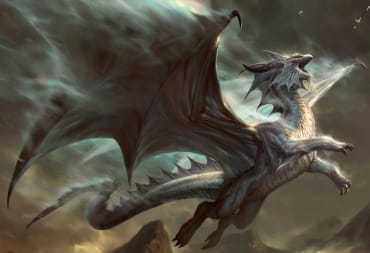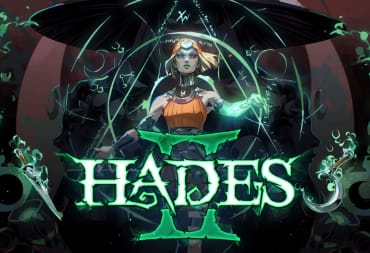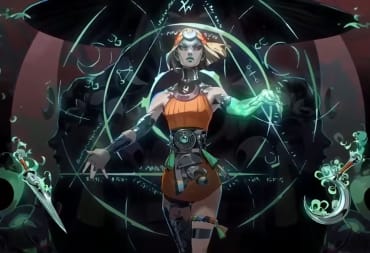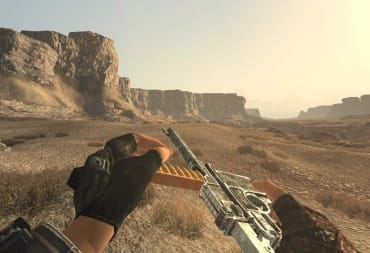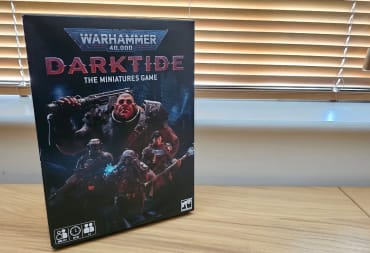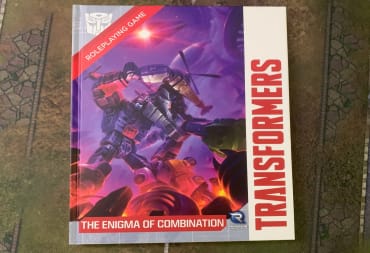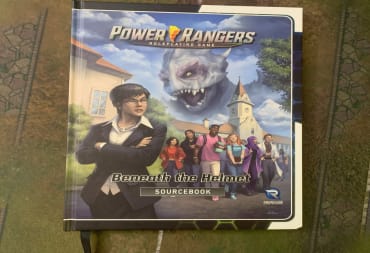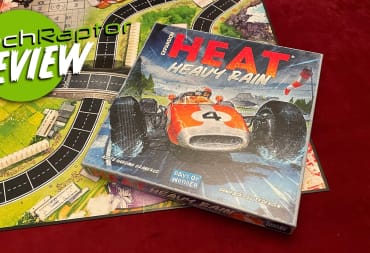There are a few board game designers who I always keep an eye out for because they consistently put out solid, interesting, and fun games. Over the past few years Andrew Parks has become one of those designers for me. He's done great work on unique games, and on a re-theme of one of the best systems ever, so I was instantly interested when I saw that he was the designer of Marvel Strike Teams, a one versus many style game when one player plays as the evil Mastermind against a group of Marvel heroes.
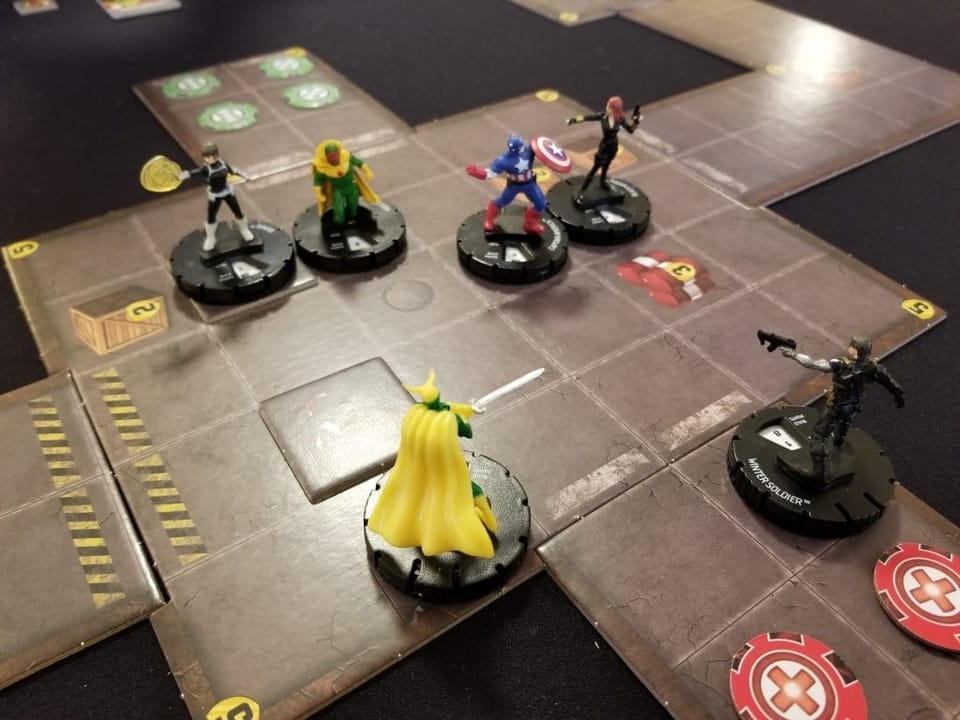
I like one versus many games, and I really like games that can be played as a campaign, and although I'm not the biggest fan of comics anymore, I really enjoy the Marvel cinematic universe, so Marvel Strike Teams initially appealed to me on many levels. For the most part, Marvel Strike Teams is really good. The game is easy to learn, it has an awesome health/damage/skill system, it's incredibly easy to track progress from session to session, and both the heroes and the Mastermind players have a decent spread of options for characters to play, especially with the Avengers Initiative Expansion that WizKids sent me along side the main game. There are a few things that keep the game from making the transition from really good to great though, but the system is solid enough, and fun enough, that all of my complaints could easily be addressed with future content releases.
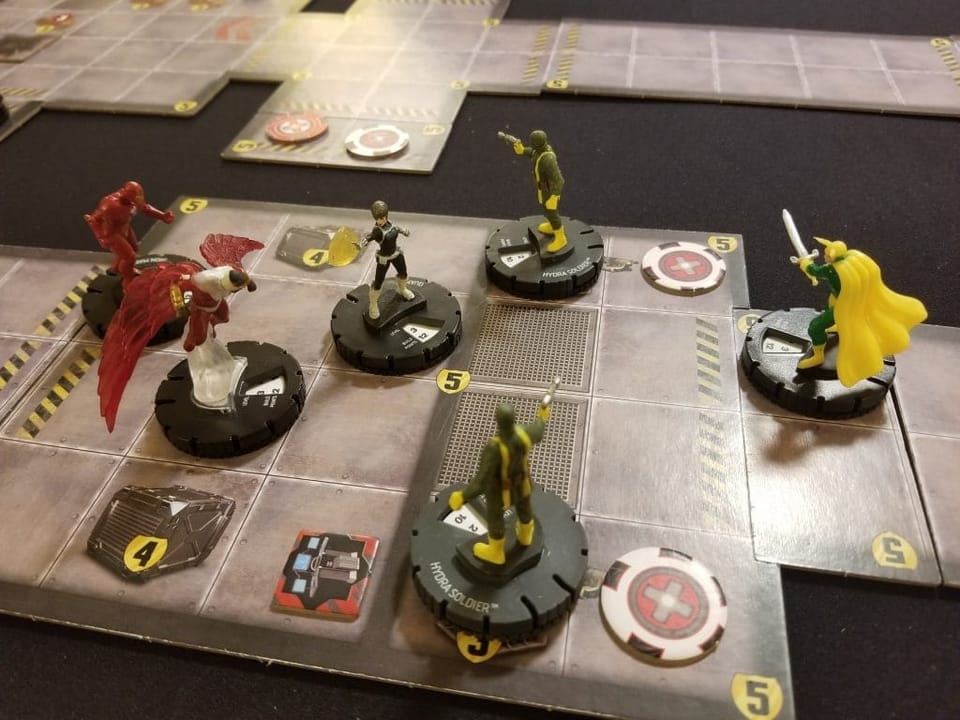
The absolute best thing about Marvel Strike Teams is the health and damage system and how the interplay that it has with character skills. Every skill, from basic movement to the most powerful of abilities has a number of slots that you can assign damage to when you are hit in combat. Every action and skill has an Action Points (AP) cost, and that cost goes up by 1 AP for each damage you assign to that action. If you fill all of the damage slots on any power, skill or action, you can't use that skill again until you heal damage off of it. The reason this system works so well is that it makes combat engaging for both players at all times. Not only does the attacker get to pull off some sweet maneuver or attack, but the defender has to decide how to try to mitigate that damage, and then how best to assign the damage they do take so that it will hinder them as little as possible. This system makes taking and assigning damage as strategic as dealing damage. It's brilliant.
[gallery size="medium" ids="273953,273954,273955"]
As you play through the game the characters can level up and bring more skills in to battle, which has the added benefit of increasing their health pool organically along the way. Each character has a Build Pool of points available to them at any given level, but every card is available from the start, and choosing the most expensive cards isn't always the right choice. Sometimes it makes sense to bring two weaker powers into the game in order to spread the damage over two different powers, while other times it may make sense to put all of your eggs in one basket in order to bring in a really cool or powerful skill. This system really gives you a great sense of having control over your character, and it can be excruciating to try and decide how to distribute the damage you've taken when you take a big hit.
[gallery size="medium" columns="4" ids="273956,273960,273961,273966"]
Marvel Strike Teams can either be played as a single session game or as a campaign of 6 missions in a row. The way the missions are designed can lead to an interesting series of events, or to a weird mishmash story that doesn't really make sense as a whole. When creating a mission, you randomly draw one map card and then a Stage 1, Stage 2 and Stage 3 scenario card. The first two scenarios are open information, while the third is only known by the Mastermind player until the end of Stage 1. All of the scenario cards are suitable comic-book-y, but they don't necessarily jive together to tell a coherent story. The game isn't going to give you a complex and interesting narrativ a-la Avengers Infinity War, but instead it feels more like picking up a single issue of a comic and playing through it, before moving on to a completely different issue that had nothing to do with the first.
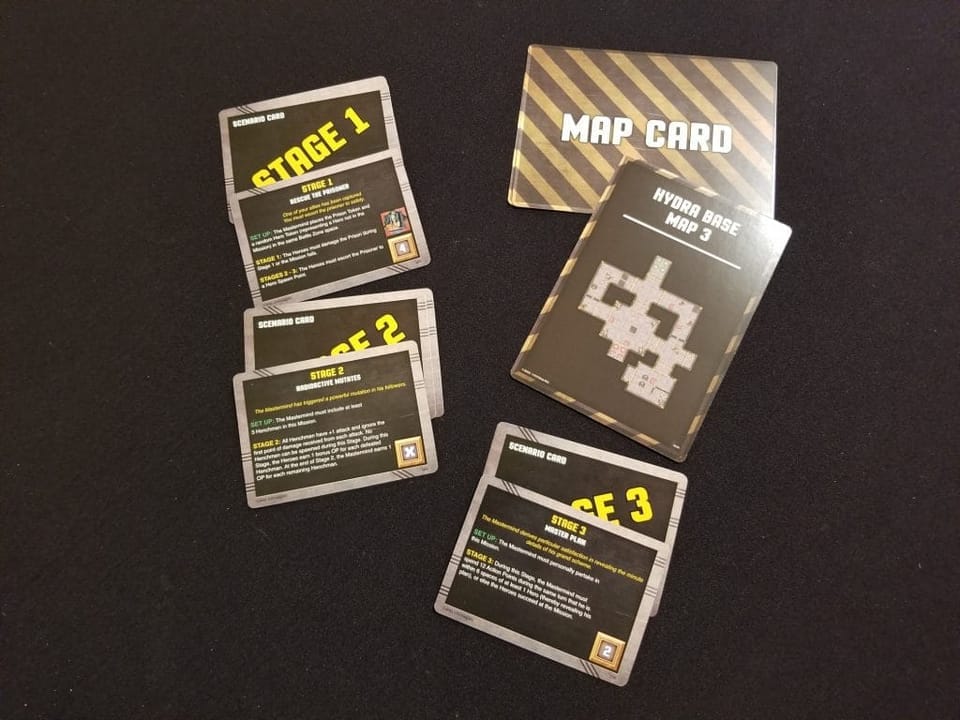
The lack of an overarching narrative, or a deeper, interconnected story isn't necessarily a bad thing, and it actually helps increase replayability, but it does leave you somewhat unsatisfied at the end of the campaign, especially since every mission effectively has the same narrative arc. Your characters do get more powerful over the course of the campaign, which is incredibly satisfying, and the combat system is excellent, but it would have been nice to have some sort of grand finale. It's a bit of a letdown to duke it out over a six mission campaign only to have the villain win the entire campaign simply by taunting the heroes. You could make things more interesting story-wise by having one player pre-determine the order of scenarios, but unless they aren't playing it would give their side of the conflict a decent advantage in the long run.
[gallery columns="2" size="medium" ids="273958,273959"]
The tiles that make up the board also don't help sell the theme of the game. In the base game box the double sided tiles are dark gray warehouse on one side and light grey Hydra base on the other. They do feature different terrain, the warehouse has crates and a safe and a forklift while the Hydra base has explosive ammo crates, and laser turrets and...a safe..., but they are so similar looking, and so bland that it really is hard to tell them apart, and they are both rather boring. They do server their purpose well though, and they are easy to use and set up, but things get really same-y over the course of a campaign.
[gallery columns="4" size="medium" ids="273962,273963,273964,273965"]
All told, the action is where the real fun of Marvel Strike Teams lies and the damage and skill system is crunchy, tactical and satisfying, and while the board is bland it ensures that the focus stays on the characters who are duking it out. Playing the game feels like a knock-down-drag-out comic book slugfest, and the random scenario design means the game could be expanded in just any possible direction. The simplicity of the scenario system means that you could easily design your own if you so choose, so if you are a the type of player who likes to create homebrew content for your games then there is a ton of room for you to be creative here. Even with those few negative points I still really enjoy this game, as does my game group, and so we're looking forward to new content for this system, especially if it expands on the narrative and thematic elements of the game. The gameplay mechanics of Marvel Strike Teams are excellent, and with the right kind of expansion support this could turn into a must have system.
A note on player count: Marvel Strike Teams can be played by 2 - 5 players. With 2 players, one person would be the Mastermind while one person would control all four heroes, and the mix of heroes per player changes as you add in more people. One huge benefit here is that play time is consistent no matter how many people you play with, and downtime isn't really an issue as you increase the player count, because the heroes can go in whichever order they choose. It's rare for a game to be just as fun across all possible player counts, and Marvel Strike Teams can honestly make that claim.
A note on the Avengers Initiative Expansion: The first expansion for Marvel Strike Teams is the Avengers Initiative Expansion, which is a characters-only expansion. It contains 4 new heroes, and 4 new villains. The heroes gain access to Vision, Black Widow, Agent Coulson and Falcon (who is absolutely awesome...if you are a hero player). The Mastermind gains access to Absorbing Man, Ultron, Agent Ward, and Loki (who is also absolutely awesome...if you are the Mastermind). While Loki and Falcon are powerful, and it's fun to have more character variety (especially as the Mastermind), there isn't anything that expands mission variety included, which is kind of a bummer.
A note on “chrome”: Marvel Strike Teams has solid components overall, and the rulebook is easy to read and learn from. The miniatures are all HeroClix figures, which means they come pre-painted, and they are all on par with other HeroClix miniatures, but they are NOT compatible with other HeroClix games, so be aware of that before you buy this expecting to use them elsewhere. The only downside to the components are the tiles that make up the board. One side is a warehouse and the other is the Hydra base, but they are both incredibly lackluster and they are very similarly colored, so it always kind of feels like you are playing on the same board, no matter which mission you are playing or where it takes place. The boards do have fun details, like objects that you can pick up and throw or cause to explode, and laser turrets you can mount and use, but otherwise they are very utilitarian and rather boring. It doesn't actually detract from the gameplay, and the boards are clearly laid out, but it does feel like a missed opportunity to add some more theme and life to the game.
The bottom line:
Marvel Strike Teams is a quite a bit of fun, especially if you are a fan of Marvel characters. There are some really cool ideas here, especially with the way that damage is handled, and it feels really good to level up characters and watch them become more powerful. The campaign system is fairly shallow, and the random mission design is a bit haphazard, and almost essentially lacking a coherent narrative,so don't expect a deep story to dive into but, at the same time, the simple mission structure lends the game the feel of a short action filled comic. That isn't a bad thing, especially if you are looking for a game that lets you feel a solid sense of progression but doesn't require a massive amount of bookkeeping to do so. This game is a great choice when you want to play a one vs many game or a campaign game with people who may not be interested in a deeper, heavier system, or if you prefer games that focus on action over story. Marvel Strike Teams is also fun when you simply play one-off missions, and it's easy to learn, so it's a great game for people who may not have a ton of experience with hobby board games but still want to play a game with their favorite Marvel characters.
Get this game if:
You like one vs many games like Descent or Star Wars: Imperial Assault.
You are a die hard Marvel fan.
You like games that focus on beat-em-up action more than story.
You like games that use deterministic, rather than dice-based, combat.
You like games that work perfectly across all possible player counts.
Avoid this game if:
You are looking for a deep, engaging campaign.
You don't like games where one player controls the villains.
You are expecting the figures in this game to be compatible with other HeroClix games.
The copy of Marvel Strike Teams and the Avengers Initiative Expansion used for this review were provided by WizKids.
Where's the score? The TechRaptor tabletop team has decided that the content of our tabletop reviews was more important than an arbitrary numbered score. We feel that our critique and explanation thereof is more important than a static score, and all relevant information relating to a game, and whether it is worth your gaming dollar, is included in the body of our reviews.
Review Summary
Have a tip, or want to point out something we missed? Leave a Comment or e-mail us at tips@techraptor.net
